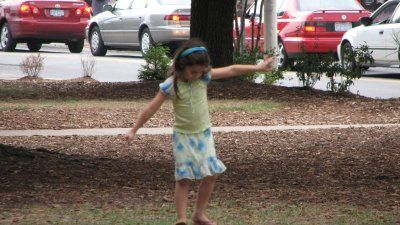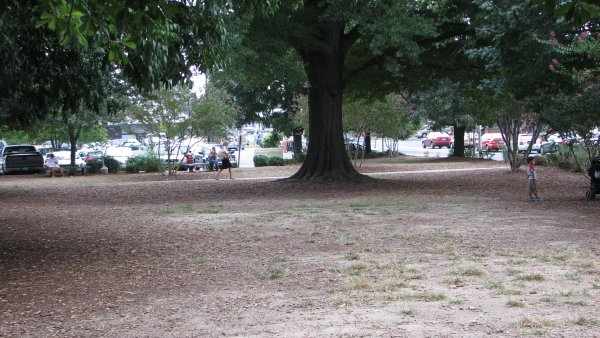Last week, the Chapel Hill News published a column I wrote (What Price Downtown) on the Chapel Hill’s downtown development project.
Today, Mayor Foy responds in a column titled Town prodeeds cautiously on downtown redevelopment.
Prodeeds, interesting typo ;-).
Before commenting on his response, I’d like to highlight an error in my column that the Mayor pointed out:
Will Raymond implied that the town had spent $4 million on the project. That figure is incorrect; the total cost to the town so far is $600,000.
Absolutely correct. Here’s what I said in my column:
Investing $4 million to date in the effort, the project is nearing the public hearing phase. Clear cut and excavated, my beautiful public space will vanish under the private heel of a looming “soft modernistic” behemoth. Rising nine stories, this disproportionate edifice will distort Franklin Street’s current village-like scale.
In an effort to excise a few words (if you’ve read anything I’ve written you know I can go on a bit) to get below the 750 word CHN limit (a limit I maybe should consider on this ‘blog), I completely torqued the sentence.
What I originally meant was, we’ve spent about $500K (the Mayor says $600K) on the process and we’ll have to belly up another “real” $500K. That, with the “kickback” of the $7.9M 99-year lease value on the properties, adds to $8.4 million in future commitments, $9M total. The $500K for digging a hole in lot #5 is already under dispute.
This is based on the recent town 2005-2006 2nd Quarter Report.
In the proposed Memorandum of Understanding, the developer will pay the Town $7.9 million ($4.75 million for Lot 5 site and $3.15 million for the Wallace Deck site) to lease Town-owned property for 99 years. The Town will pay the developer a fixed amount of $7.9 million for the construction of the Lot 5 parking garage and other Town-owned improvements. The Town also will pay $500,000 to support parking for affordable housing units.
Quite embarrassing. I will, if allowed, make a correction in my next column.
Now, on to the Mayor’s response.
This newspaper recently published letters and a column in which citizens expressed concerns about what has been called the Ram project, a proposal to build multi-story
residential/commercial developments at two town-owned sites in downtown Chapel Hill. I would like to address those concerns, give a general overview of the project, and clear up some inaccuracies.
The Town Council has focused on downtown as a priority because, although it’s good now, we know it can be better. We therefore engaged in a deliberate and thorough planning process for the downtown initiative (located at two sites: Parking Lot 5 and the Wallace Deck).
Plans for private downtown development are already moving quickly, with proposed Greenbridge’s ( 180K/sq. ft., 109 condos, $300K-$400K), Shortbread Lofts ( 165 units, 50 reserved as affordable) and the just completed Rosemary Village (38 condos, $350K-$700K). Do we need to convert citizen-owned assets into privately-held condos before we see the effect these planned buildouts will have on the housing market?
This planning began about five years ago and included citizen workshops, design work sessions, and public meetings. Last year, the council began working with a private developer, Ram Development Company, to bring the plans to fruition. In a July 30 column (“What price downtown?”), Will Raymond implied that the town had spent $4 million on the project. That figure is incorrect; the total cost to the town so far is $600,000.
Aside from cost, however, is the issue of whether the development project should be pursued at all. The Town Council is working on this project because we believe it will enhance downtown as the center of our community. We know that downtowns that have a mix of uses and people who live there are more vibrant than those that don’t. And we also know that a dynamic downtown — with people living, working, and relaxing — leads to a safe downtown.
Unfortunately, the plans for boutique shopping and luxury condos don’t really add to the “mix of uses” we need downtown. The privately-sponsored developments will provide housing and we already have plenty of empty commercial space downtown. Worse, the current proposal doesn’t incorporate an “anchoring” tenant, like a grocery store, that the surrounding community can “center” on. Without a kid-friendly plaza, a strong commitment to retain maximum public use, lot #5 lacks a strong focusing element.
But back to the finances. The council has entered into a memorandum of understanding with Ram, which outlines the basic terms and conditions of the proposed development agreement. Under the memorandum, the town’s cash contribution to the development would be $500,000, which would support the cost of parking for the affordable housing within the development. This amount is the limit of the town’s exposure, in a development that is expected to cost more than $80 million.
However, recent news reports are correct in stating that construction costs have risen so quickly that Ram is not now confident that it can develop the project as first envisioned. That means that the financing issue might have to be revisited and revised. But contrary to the assertions raised in a July 23 letter to the editor (“Town has bad record for paying off builders”), the Town Council has not authorized or encumbered any local property tax revenue for the construction of the development.
Additionally, the letter writer, Ole R. Holsti, criticized the town for its management of school construction and a bridge replacement. The town is not involved in any way with school construction, and the town properly managed the bridge replacement. In fact, the town has an excellent record in its stewardship of public funds.
Mr. Holsti picked some poor targets for criticism but he was on to something when he said “The first step in shaking this reputation is to let Ram Development understand that not an additional penny of tax funds will be forthcoming.” The Mayor did not respond to my concern the TIF (tax incremental funding) has come back into play. Debt issued under TIFs is, in the end, secured by the citizenry. We are exposed to significant liabilities.
The council continues to work on the downtown development. We look forward to hearing citizens’ thoughts as we proceed with the discussions this fall. We are fortunate in Chapel Hill to have citizens who are interested and involved in the business of the town, and who hold us to the highest standards. I hope and expect that people will pay attention to the council’s efforts for downtown, and will work with us toward what is best for the community.
I’m glad the Mayor looks forward to input from the tax-paying public. I wish he had addressed the issues of scale – a 9 story beast , the eroding reasons – filling the gap in downtown residential and commercial development, lack of public utility, etc. I raised in my column.


